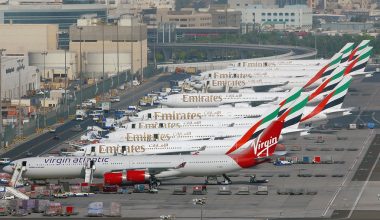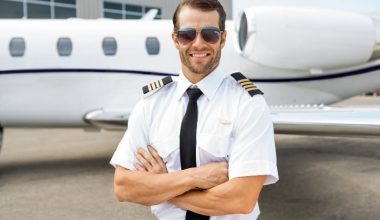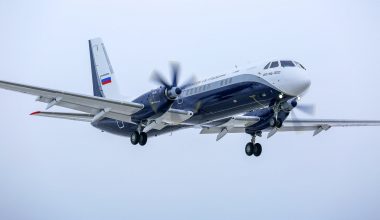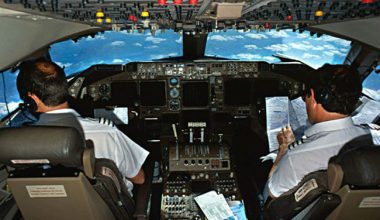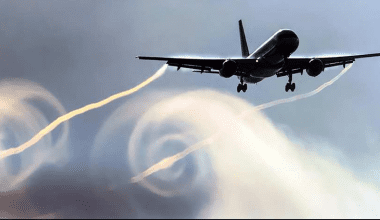One of the first things anyone notices about an aircraft is its livery. The aircraft painting provides a peek into the airline, has a powerful way of reflecting its ideas, and acts as a form of recognition for carriers and their brands. Aircraft painting improves the appearance of the flying machine and scales its overall look. A new coat of paint helps airlines to differentiate themselves from their rivals and show the creative side of their brand. It enhances aesthetic value, supports the metal frame, and prevents aircraft corrosion.
Aircraft painting can simply represent a company’s brand, logo, emblem, or theme. It can also be the floodgate of creativity for airlines, including intricate one-off designs, artistic masterpieces, eye-catching colors, cartoon themes, etc. Due to the airline’s partnership with other companies, the painting of aircraft pushes up the marketing ties and promotes their latest projects up in the sky.

What is aircraft painting?
Aircraft painting is an essential component of aerospace engineering. It acts as a protective covering to the aircraft’s metal and makes it more visible and aerodynamic due to its smooth painted surface. Aircraft paints are a special blend of polyurethane and enamel paints consisting of resin as coating material, pigment for color, and solvents to reduce the blend to a workable viscosity. The topcoat finish is applied to the exposed surfaces and components to provide protection and a pleasing appearance. The paints are approved through an aerospace specification which often includes a long list of strict requirements and subdivisions into the intended application (interior, pretreatment, exterior, and primes), etc. The aircraft paint must stand the test of time, pass different tests, such as the exterior solar reflectance test, and undergo a detailed exercise of various techniques used to apply the paint.

Aircraft painting is a labor-intensive, multi-step process that usually takes one to two weeks and costs between $150000 and $300000 to complete. The painting for smaller planes can cost as little as $50000 due to its small size and less design complexity. During that time, the plane is taken out of service and doesn’t generate revenue. Depending upon the aircraft size, several painters are needed to apply paints; e.g., the private takes2-3 painters, while the Airbus A380 aircraft requires more than 20 painters to complete the painting in two weeks.
Why is aircraft painting necessary?
In the early days of commercial aviation, aircraft manufacturers or operators simply used bare metal and chrome. Still, they have gradually turned back to aircraft painting to eliminate the task of constant polishing to remove the stains of dirt or dust on aircraft surfaces.
Aircraft painting is much more than holding a paintbrush and rolling, which requires a steady hand and intense attention to the details. Aircraft painting prevents the corrosion of underlying metal, protects the structure from ultraviolet degradation, and offers vital protection to the fuselage. Applying fresh paint to an aircraft helps improve aerodynamic performance by preventing dirt on the aircraft surface. Likewise, painting the aircraft slows down the wear and tear process of interior and exterior surfaces through the protective coat and saves money from costly repairs. It is easy to spot defects and damage on a painted composite part, which facilitates a safety routine and protects lives and properties onboard the aircraft.
Also Read: Qatar airways grounded 13 Airbus A350 following conflict with Airbus
On the other hand, nicely painted aircraft increase the curb appeal and catches a glimpse of the passengers. It drives brand engagement, highlights set occasions, and provides an arena for corporate identity. The paint scheme helps to personalize the airplane and works as an identifier for a particular airline company. A professional paint job well depicts the style and shape of the aircraft and provides a major form of advertising for airlines. Some paint schemes permeate airline promotional materials and aircrew uniforms, the airline’s history, or regional influences in an increasingly integrated manner.
Aircraft painting comes with certain costs. It is an expensive endeavor because the surface area to be painted on aircraft is large, requiring a minimum of 50 lbs of paint for small aircraft like Cessna and a quarter of a ton for jumbo jets. The Boeing B737 aircraft requires at least 240 liters of paint for its livery.
On the other hand, aircraft paint affects aircraft weight, which is directly proportional to fuel burn, affecting airlines’ profitability. The paint adds weight to the plane, increasing fuel consumption and reducing airline payload and profit margin with significant economic and environmental consequences. It can add up to an extra 500 kg, which adds up to the aircraft’s operational life. So, the aircraft must be stripped of its previous paint before it is repainted.
How are aircraft painted?
The aircraft paint must be rigid wearing but must adjust with the loads on the structure while coping with huge swings in temperature and harsh UV light in the upper atmosphere. Owing to the importance of aircraft painting as the visible epitome of airline brands and the sheer cost of it, there’s pressure to line up everything correctly.
When the aircraft rolls out of the assembly line, they are painted green or beige, depending on the components. The metallic aircraft have green color due to the first layer of anti-corrosive zinc chromate coating, and aircraft made of composites are painted beige.

The aerospace titans Airbus and Boeing provide a three-color paint scheme on a new aircraft without charging additional money as they have their paint facilities and dedicated teams. These playmakers produce a dossier that provides clear details on the type of paints to be used, required resources, etc., and a virtual computer-generated 3D model is created to ensure the aircraft meets all safety requirements and regulations before it goes to be painted. The stencil is produced for desired color patterns, and the aircraft enters the paint hangar for further paintings.
Initially, the specialists apply eco-friendly chrome-free primer and a layer of background color. Finally, the clear coat is kept in place after all other color paints and adhesive films. The touch-ups are made to get the consistent finish of precisely the right shade, and if necessary, the aircraft is weighed to determine the thickness of the paint layers.
Repainting of aircraft
To keep the aircraft bright and crisp throughout their operational lives, they must be repainted regularly, on average, around every 7-10 years. The well-maintained paint helps the airline’s image and protects aircraft parts from corrosion and deterioration. However, before opting for aircraft repainting, it is essential to know that airliners must be stripped of old color either by sanding the paint off or spraying the solvent and letting it naturally dissolve the existing paint. The removal of the paint layers exposes the metal skin, allowing it to be scrutinized for any corrosion and wear or tear.
Both enamel and epoxy are the main types of paint used, each possessing different chemical properties. Polyurethane or epoxy is an expensive paint featuring adhesive properties, heat resistance, and high compressive strength at a lower weight to extend the aircraft’s lifespan. As a protective coating, epoxy dries less hard and is more resistant to chemicals.
Enamel is a harder type of paint that provides excellent corrosion resistance and keeps a tremendous shine even after exposure to extreme conditions. Usually, both epoxy and enamel are usually combined to make an aircraft paint where the enamel is applied first, then epoxy for extra protection and shine.
The aircraft painting scheme has become an increasing focal point of significant technical innovation, discarding the use of a regular paintbrush and opting for a very thin layer of spray paint that is low-pressure and high volume, and a wide variety of materials, multipart finishing formulas, and finishes for protection and presentation. The aircraft painting is affected by ownership changes, aircraft rebrandings (alliance, regional, and logo), mergers, and acquisitions. Some aircraft have specialized paintings to commemorate the important milestone, stress the length of the airline’s experience and tradition, or reflect the airline’s partnership with other companies.

Why is the white color predominant in aircraft?
Although every airline has a definite livery, most aircraft around the world are predominantly painted white due to several reasons regarding sunlight, economy, safety, maintenance, etc. By painting an aircraft white, there will be minimal cabin heating and less potential damage from solar radiation. In terms of economy, white paint fades slower than other color paints, saving airlines significant money in repainting. From a safety point of view, the white livery allows birds to detect the aircraft and steer away from it, minimizing the impact of birds in flight. Similarly, the maintenance crew can easily detect cracks, leaks, and damage in white-painted aircraft, increasing flight safety.

